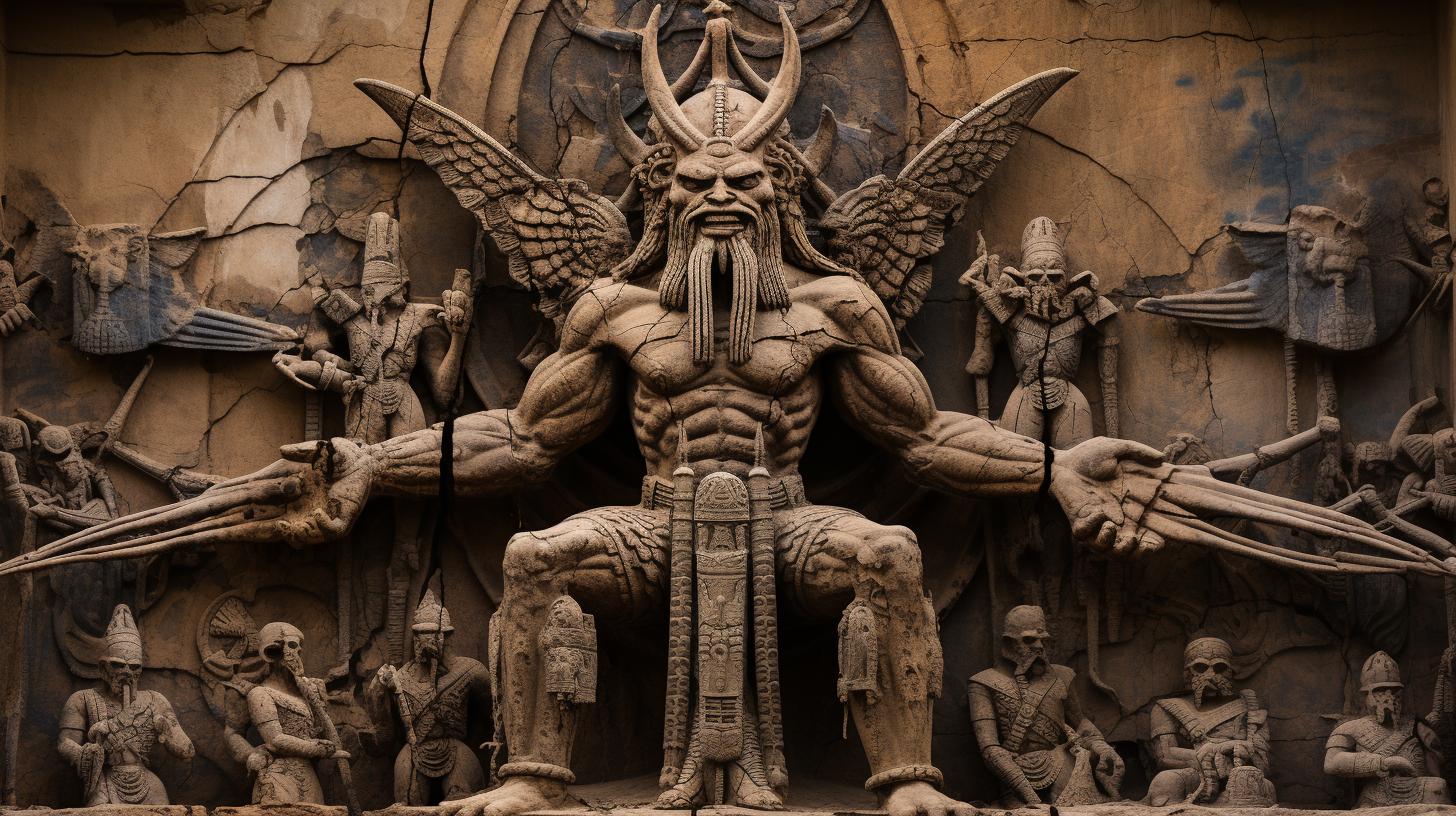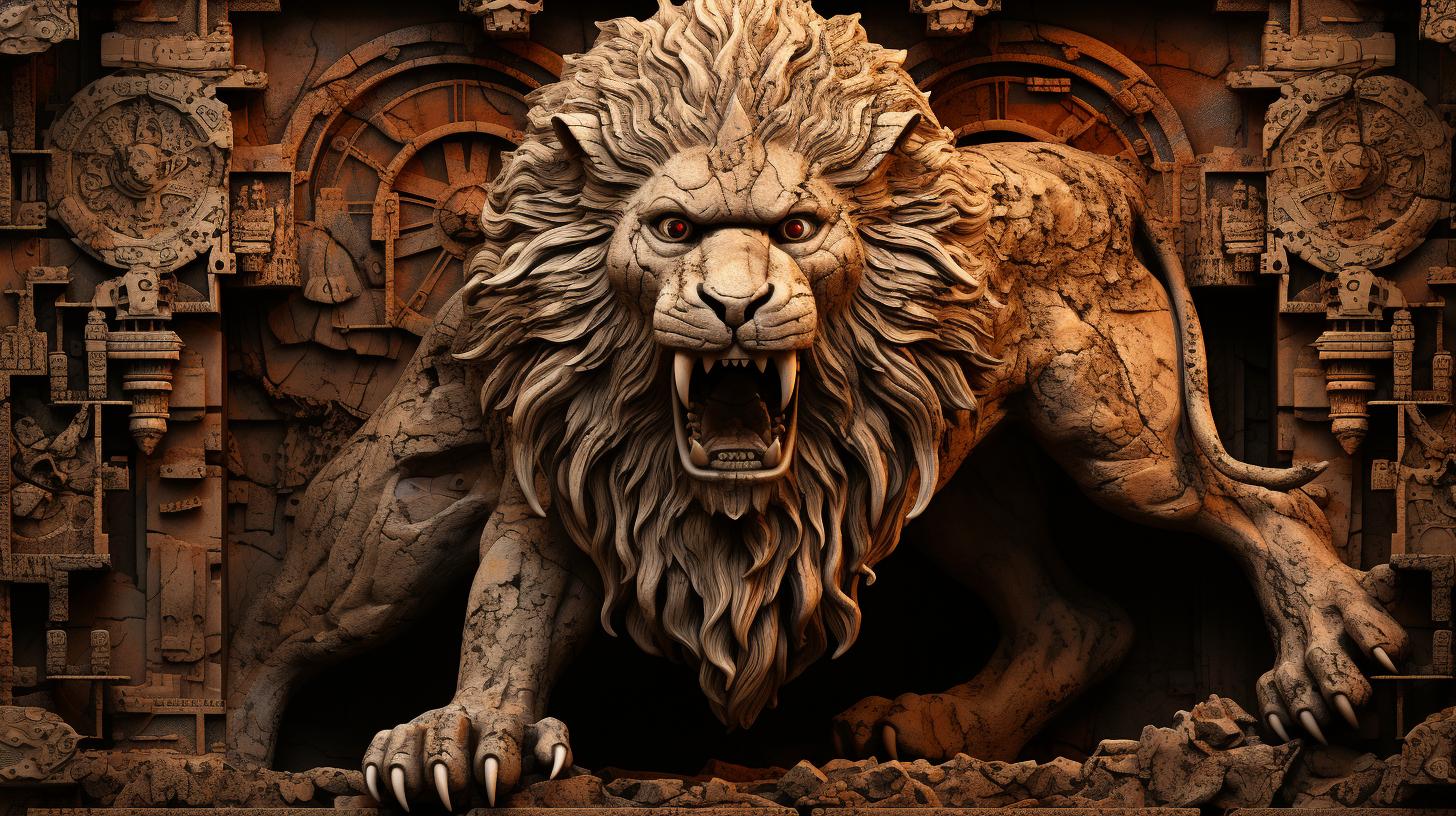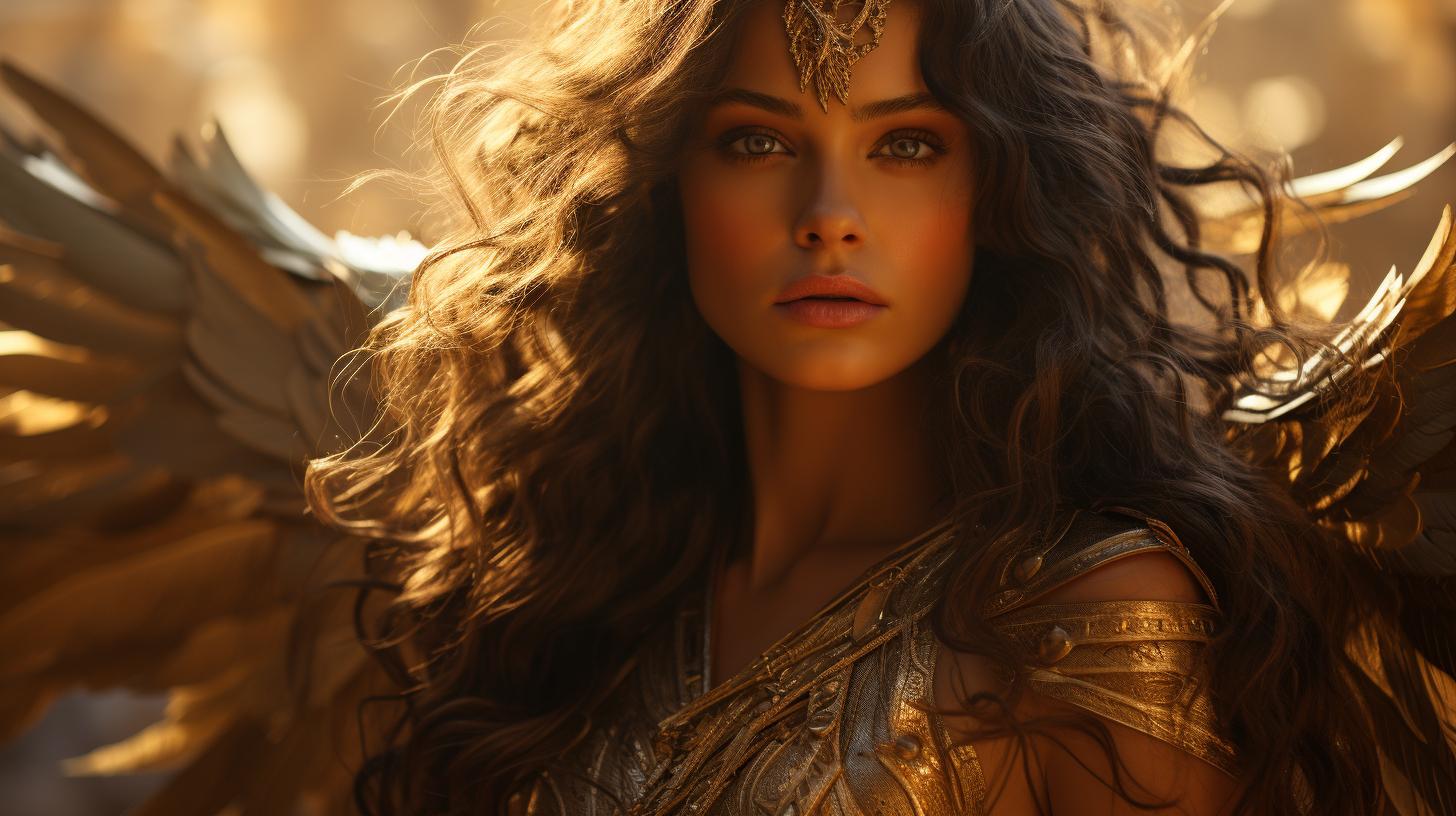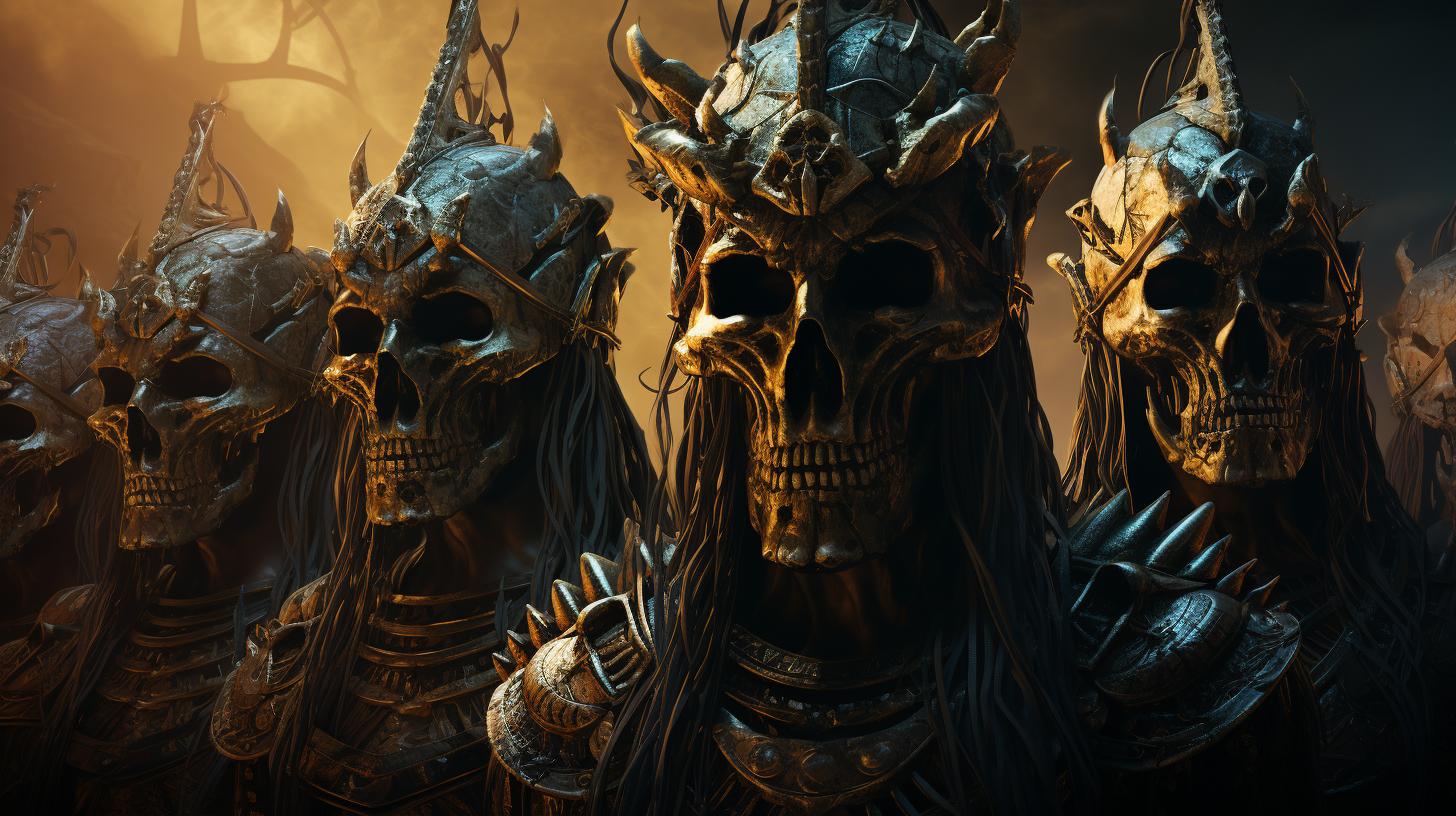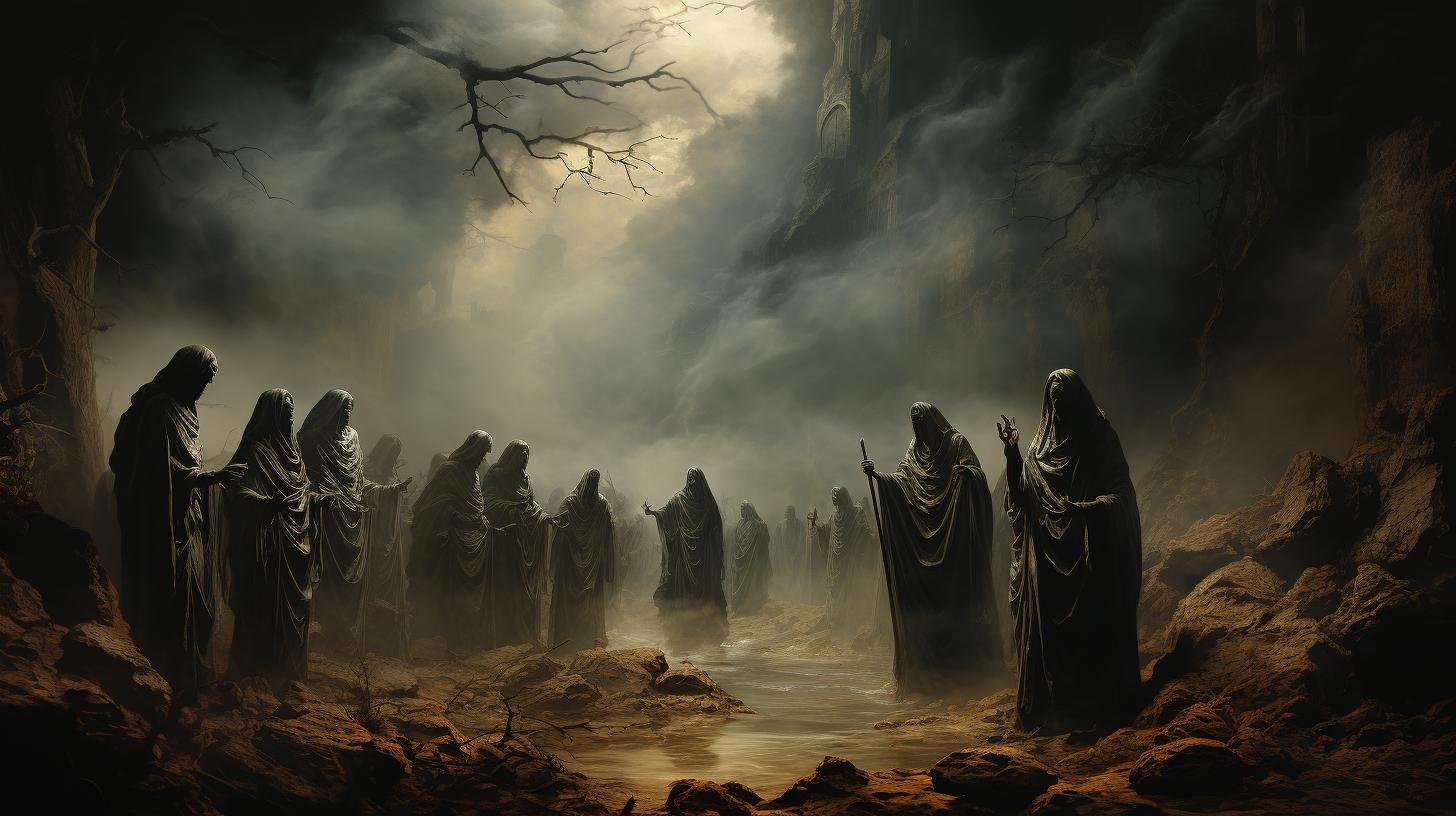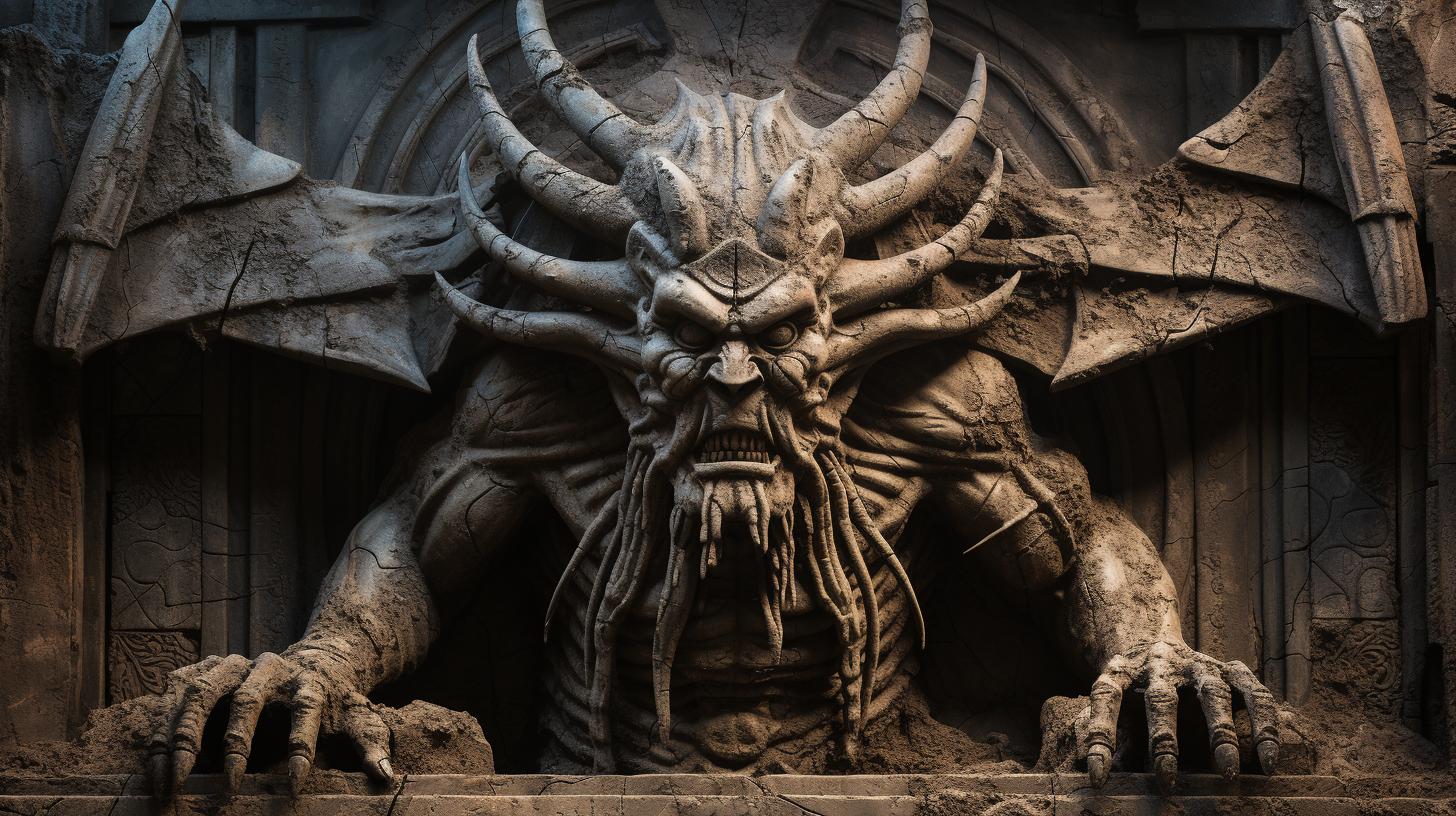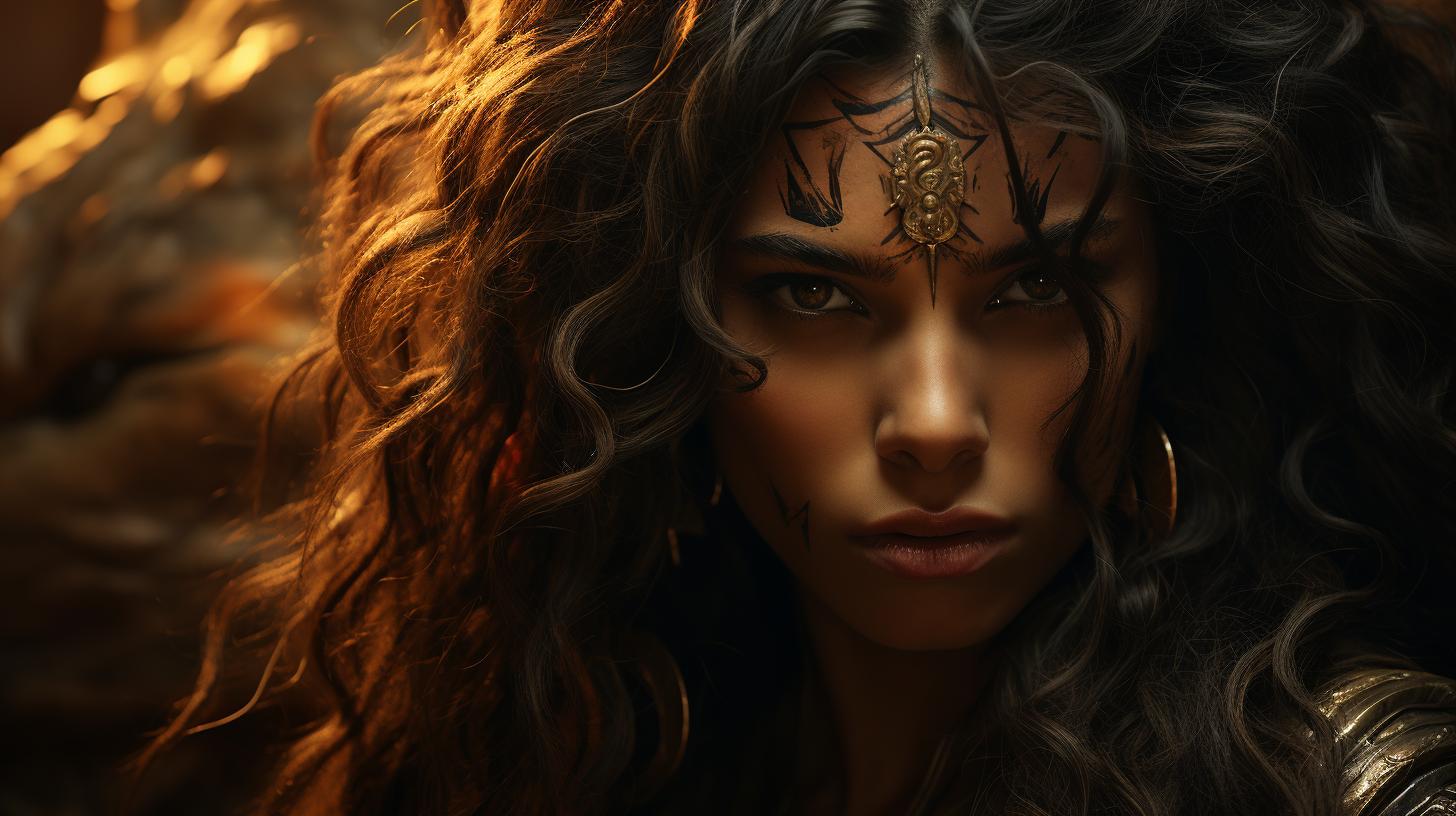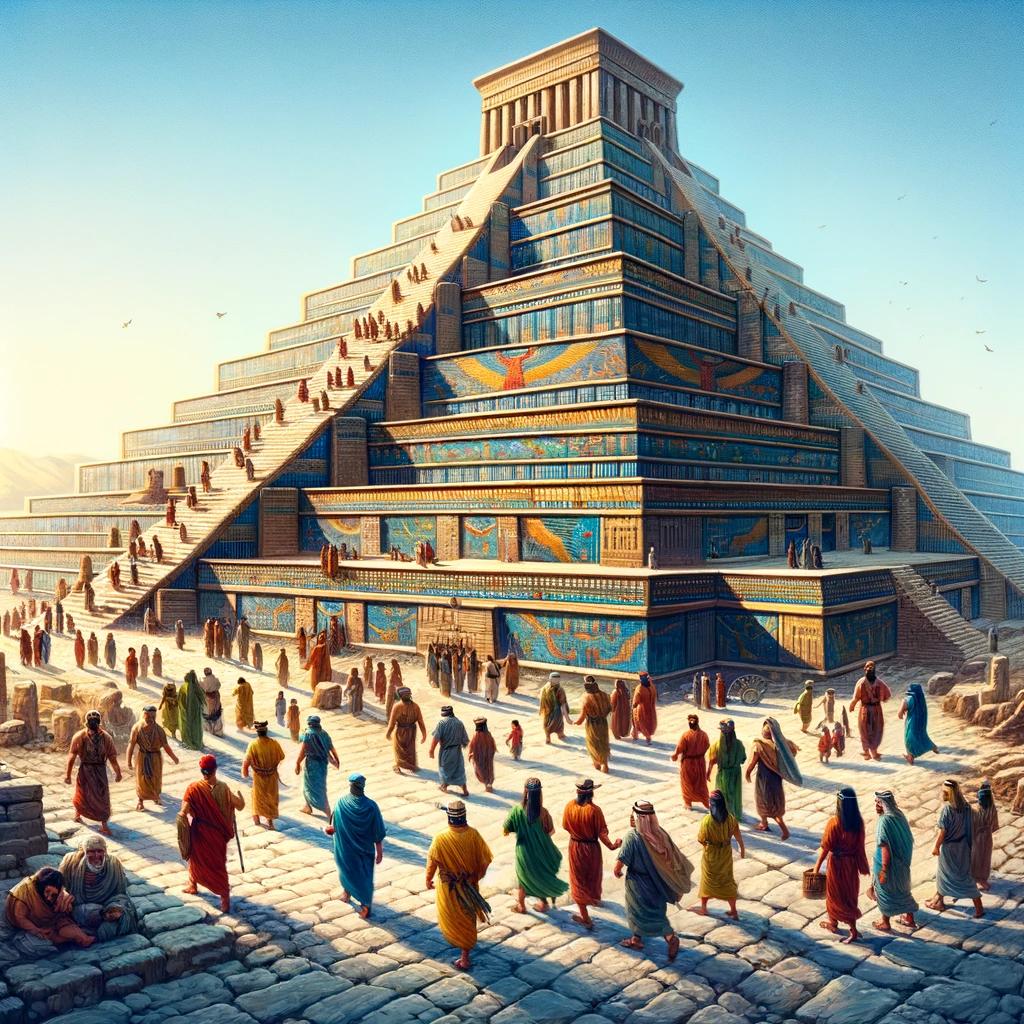Girtablilu Myth: Unveiling the Legendary Scorpion Man of Ancient Mesopotamia
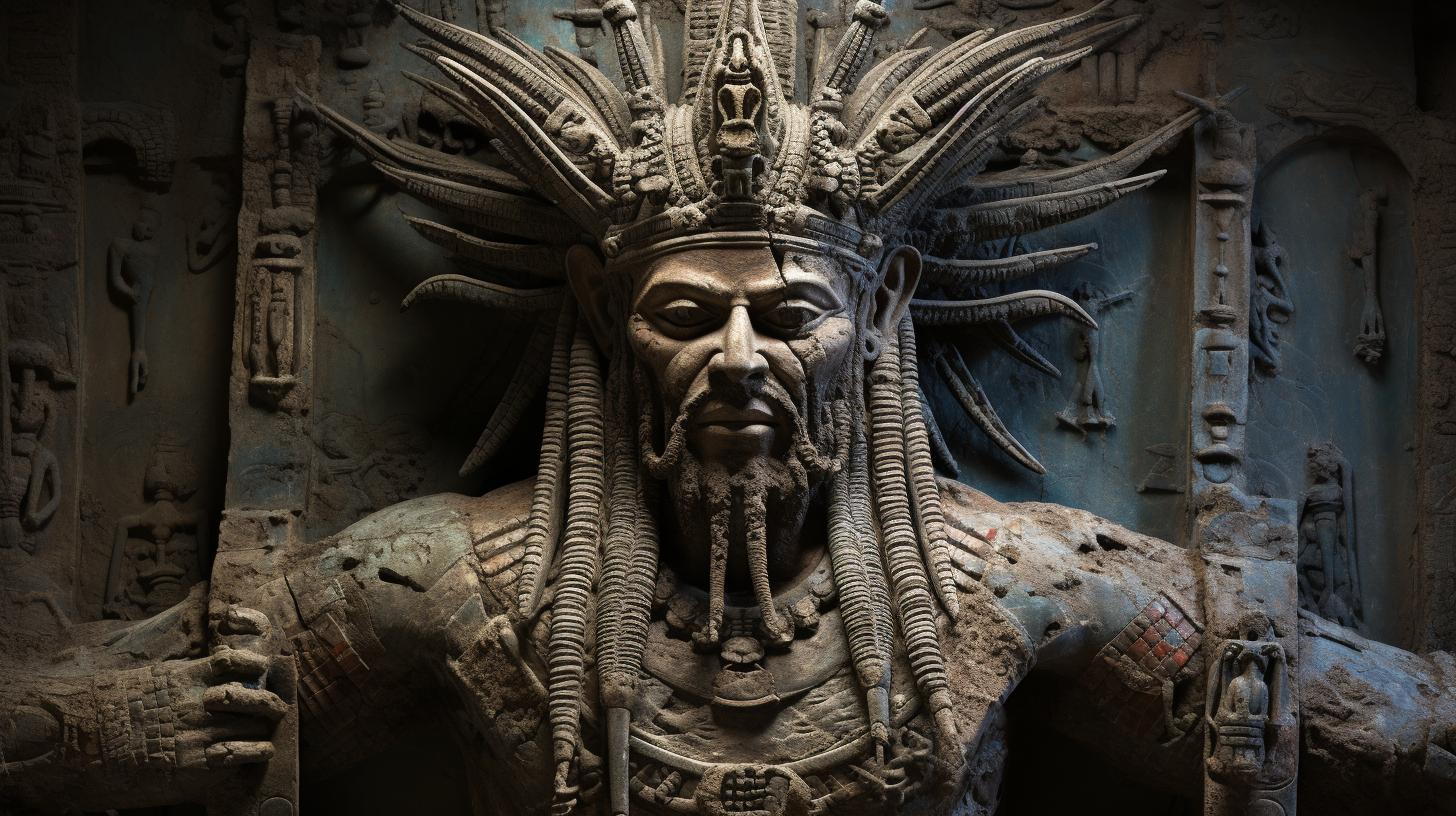
The Girtablilu myth is rooted in ancient Mesopotamian mythology, with its prominent depiction appearing in the Epic of Gilgamesh. These mythical beings, known as Scorpion Men, possess transformative abilities, taking on the form of humanoid creatures with scorpion attributes.
A notable characteristic is their venomous nature, capable of producing a deadly poison. Stories portray the Girtablilu as defenders and gatekeepers, involving interactions with deities such as Shamash. This article explores their society, hierarchy, and the contrasting Aqrabuamelu species, as well as their symbolism and presence in popular culture, including references in the TV series Teen Wolf and the world of Mythika.
The Origins of Girtablilu Mythology
The Girtablilu myth holds its roots in the ancient mythology of Mesopotamia, a region known for its rich cultural and religious heritage. Within this mythology, the Epic of Gilgamesh stands out as a prominent source of Girtablilu lore.
The Scorpion Men, as they are often referred to, play a significant role in Mesopotamian mythology, representing a unique blend of human and scorpion characteristics.
Ancient Mesopotamian Mythology
Ancient Mesopotamian mythology encompasses the beliefs and stories of various civilizations that thrived in the region, including the Sumerians, Akkadians, Babylonians, and Assyrians. These mythologies laid the foundation for the Girtablilu myth, providing a cultural context and a basis for understanding their significance within the pantheon of Mesopotamian deities and mythical creatures.
The Epic of Gilgamesh
The Epic of Gilgamesh, one of the oldest surviving works of literature, features the Girtablilu prominently. In this epic tale, Gilgamesh encounters the Scorpion Men on his quest for immortality.
These creatures guard the gates of the sun, challenging anyone who seeks passage. Their fearsome appearance and role as gatekeepers make them a captivating element of the narrative, showcasing their connection to power and the realms of gods.
The Scorpion Men in Mythology
The Scorpion Men, also known as Girtablilu, are mythical beings that embody a transformation of both physical and symbolic nature. Taking on a hybrid form of humans and scorpions, they possess distinctive attributes that bridge the gap between the terrestrial and the divine.
Their representation in Mesopotamian mythology serves as a testament to the ancient civilization’s fascination with creatures that stood on the threshold between worlds.
Characteristics and Attributes of Girtablilu
The Girtablilu creatures possess unique characteristics and attributes that distinguish them as fascinating beings in Mesopotamian mythology.
Human-Scorpion Hybrid Description
The Girtablilu are described as humanoid beings with scorpion features, combining the body of a man with attributes of a scorpion. Their physical appearance includes the ability to transform, showcasing a hybrid form with scorpion-like appendages.
Transformative Abilities
One of their notable abilities is the power to shape-shift, allowing them to transition between their human-like form and their scorpion-like appearance. This transformative capability, shared with other mythological creatures, emphasizes their versatility and adaptability.
Venomous Nature
The Girtablilu are commonly associated with their venomous nature. They possess the ability to produce a potent venom that is often described as deadly. Their venomous attribute adds to their formidable presence and establishes them as fierce beings in ancient legends.
These distinct characteristics and attributes of the Girtablilu contribute to their mythical allure, symbolizing their power, duality, and their place within the intricate tapestry of Mesopotamian mythology.
Girtablilu in Mythological Stories
The Girtablilu, or Scorpion Men, have a rich presence in ancient Mesopotamian mythology, with various narratives and interpretations passed down through time.
These mythical beings are prominently featured in the Babylonian version of the myth. According to this tale, the Scorpion Men were created as guardians of the sun god Shamash’s sacred mountain abode.
They were tasked with defending the gates and preventing unauthorized access to the divine realm.
The Babylonian Version
In the Babylonian version, the Scorpion Men are described as formidable creatures, half-human and half-scorpion, with the ability to speak and reason. They are depicted as fierce protectors, standing guard at the entrance, armed with poisonous stingers.
Only Shamash himself, the sun god, was permitted to pass through their gates, as they recognized him as their divine master.
Tales of Scorpion Men Defending the Gates
Mythological stories often recite heroic endeavors of individuals attempting to gain access to the sacred realm guarded by the Scorpion Men. These tales speak of brave adventurers facing perilous trials, battling the Scorpion Men to prove their worthiness.
The Scorpion Men served as challenging opponents, testing the resolve and mettle of those seeking entrance, ensuring that only the most worthy could pass.
Relationships with Deities like Shamash
The Scorpion Men had a significant connection with deities such as Shamash, who commanded their allegiance and served as their patron. They upheld their duty to protect the divine realm and maintain the order established by the gods.
In some interpretations, the Scorpion Men were regarded as loyal subjects, embodying the divine will and carrying out the mandates of the deities they served.
Girtablilu Society and Hierarchy
In the complex society of the Girtablilu, colonies play a crucial role in their structure. These centaur-like beings with scorpion characteristics form organized groups, each with its own hierarchy and purposes.
At the center of it all stands the queen, Serket, a revered figure considered both a deity and ruler. She is the only female among the Girtablilu, holding significant power over the colony and ensuring its survival.
Colonies and the Role of Serket, the Queen
Girtablilu colonies consist of numerous individuals who uphold strict devotion to protecting their queen, Serket. As the sole female representative, Serket possesses an air of divinity and holds the fate of her colony in her hands.
Any threat to her well-being can cause chaos among the Girtablilu, leading to the disarray of colonies and their transformation into isolated and individualistic entities.
Protectors of the Colony and Their Violent Nature
The Girtablilu exhibit an aggressive and violent nature when it comes to safeguarding their colony.
They take pleasure in engaging in combat, utilizing their immense strength and scorpion attributes, such as their venomous stingers and formidable pincers. These protectors spare no mercy for intruders, showcasing their fierce dedication to preserving their territory.
Survival of the Fittest and Lack of Respect for the Weak
Within Girtablilu society, the principle of survival of the fittest reigns supreme. Weakness is not tolerated, as Girtablilu value strength and power above all else. They show no respect for those less capable, considering them unworthy and disposable.
In this ruthless society, only the strongest individuals thrive and maintain their dominance over others.
Aqrabuamelu: Another Species of Scorpion Beings
Aqrabuamelu, a distinct species within the realm of scorpion beings, presents contrasting characteristics compared to the Girtablilu. These creatures, known as giant scorpion-demons, possess a unique blend of demonic upper bodies and lower bodies resembling walking sand scorpions.
While they may not reach the size of their true sand-walking scorpion counterparts, they command respect from demons and engage in unholy unions to give rise to an even more bloodthirsty hybrid species.
Contrasting Characteristics to Girtablilu
In their physical appearance, the Aqrabuamelu differ from the Girtablilu. With their scorpion-like arms terminated in pincers, they showcase a distinctive attribute distinguishing them from their counterparts. Additionally, their venom, while sharing similarities with that of the Girtablilu, induces a fever of demons, with the victim succumbing to the potent Girtablilu venom.
Demon Interaction and Bloodthirsty Nature
The Aqrabuamelu exhibit a higher degree of demonic association and a voraciousness for bloodshed. Their demonic upper bodies and insatiable nature convey a sense of malevolence and aggression. This aspect drives them to engage in violent confrontations and mercilessly prey on their victims, reveling in the resultant chaos.
The unique characteristics and sinister nature of the Aqrabuamelu enrich the mythological tapestry surrounding scorpion beings, offering a distinct perspective in comparison to the Girtablilu. Understanding these contrasting species sheds new light on the diverse mythical creatures populating ancient Mesopotamian folklore.
Symbolism and Influence of Girtablilu Mythology
The Girtablilu myth holds significant symbolism, representing power and strength within ancient Mesopotamian culture. These scorpion men embody a sense of fearlessness and dominance, reflecting the Mesopotamians’ fascination with formidable creatures.
Representation of Power and Strength
The Girtablilu creatures, with their hybrid nature and venomous abilities, symbolize the inherent power and strength revered by ancient Mesopotamian societies. They serve as reminders of the relentless forces of nature and the value placed on prowess in battle and defense.
The imagery of a human-scorpion hybrid accentuates the belief in combining the best qualities of both creatures to create an extraordinary being.
Cultural Significance in Mesopotamian History
Within the context of Mesopotamian history, the Girtablilu possess cultural significance as mythical beings believed to guard the gates against malevolent forces. Their mention in ancient texts such as the Epic of Gilgamesh showcases their enduring presence in folklore and their perceived role as protectors of the divine realm.
Their representation in art and artifacts further highlights their importance in Mesopotamian culture and mythology.
Debunking Common Misconceptions about Girtablilu
Dispelling Myths and Misinterpretations
The Girtablilu myth has been subject to various misconceptions and misinterpretations over time. It is crucial to address these misconceptions and set the record straight regarding this ancient Mesopotamian legend.
- Contrary to popular belief, Girtablilu are not inherently malevolent beings.
They are protectors and gatekeepers, showcasing fierce loyalty and guardianship over their colonies.
- Another common misconception is that Girtablilu are mindless and solely driven by a thirst for violence and bloodshed. However, they possess complex social structures and exhibit intelligent behavior.
- While Girtablilu have scorpion-like attributes, they are not inherently evil counterparts to humans.
They are creatures with their own society and purpose, often serving as protectors and defenders.
Misconception 1: Girtablilu are monstrous and malevolent creatures
Misconception 2: Girtablilu are mindless and bloodthirsty
Misconception 3: Girtablilu are evil counterparts to humans
Distinguishing Girtablilu from Other Mesopotamian Creatures
Girtablilu are often confused with other mythological beings from Mesopotamian folklore. Here, we distinguish them from other similar creatures to clarify any confusion.
- Unlike the Nephilim, who are giant offspring of divine beings and humans, Girtablilu are not demigods, but rather a distinct species combining human and scorpion characteristics.
- Girtablilu should not be confused with Aqrabuamelu, a separate species of scorpion beings depicted with demon-like features. While both possess scorpion attributes, Girtablilu have a unique societal structure and are not affiliated with demonic entities.
Nephilim
Aqrabuamelu
Girtablilu in Popular Culture
Throughout the years, the mythical creatures known as Girtablilu have made their mark in popular culture, leaving an indelible impression on various media platforms.
References in Teen Wolf TV Series
The hit TV series Teen Wolf has referenced the Girtablilu in its storyline, introducing the character Lucas, a quimera whose genetics are that of a Girtablilu. Lucas possesses the ability to transform into a humanoid-scorpion hybrid, showcasing the physical attributes and venomous nature associated with these creatures.
With their heightened strength, agility, and distinctive black eyes, the Girtablilu add an element of mythology and danger to the Teen Wolf universe.
Mythika and Its Depiction of Girtablilu
In the fictional world of Mythika, Girtablilu are depicted as a race of centaur-like beings that combine humanoid features with massive scorpions. Within their colonies, the Girtablilu have a unique societal structure and hierarchy, with a single queen, Serket, who is considered a deity.
Their protectiveness towards their colony and their violent tendencies are portrayed vividly, showcasing their preference for utilizing their stingers and claws as weapons. Mythika highlights the Girtablilu’s resilience, survival of the fittest mindset, and the chaos that ensues in the absence of their immortal queen.
Overall, the Girtablilu have successfully bridged the gap between ancient Mesopotamian mythology and contemporary popular culture, captivating audiences with their transformative abilities, lethal venom, and intriguing presence.
.

